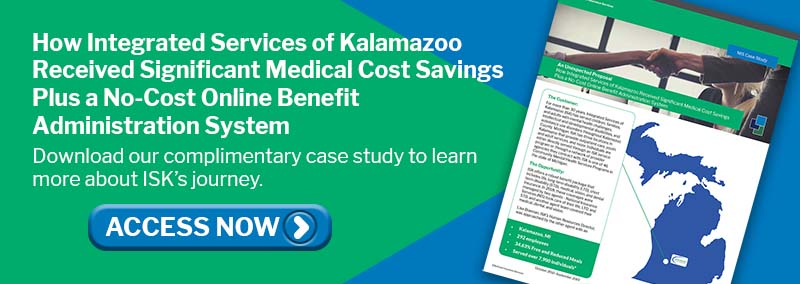3.5 minute read
Health care costs are expected to rise significantly in 2025, with projections indicating a 7%-8% increase. Large employers foresee a 7.8% rise, while others estimate an 8% median increase. As we near 2025, understanding the factors driving these costs is crucial.
GLP-1s
The rising demand for glucagon-like peptide-1 (GLP-1) drugs is significantly driving up healthcare costs. A survey revealed that 57% of respondents believe GLP-1 spending greatly impacts these costs. Priced at about $1,000 monthly, these drugs are used long-term for sustained benefits. Initially approved for type 2 diabetes, GLP-1s are now popular for weight loss, with drugs like Mounjaro, Ozempic, and Rybelsus often prescribed off-label. They also show promise for treating other conditions like Alzheimer's and heart disease. Currently, 1 in 8 Americans have used GLP-1s, and usage is expected to rise, potentially reaching 9% of the population by 2030.
General Pharmacy Spend
GLP-1s aren't the only costly drugs affecting healthcare expenses. In 2025, healthcare inflation is driven by general price hikes and specialty medications, leading to increased pharmacy spending.
Existing Drug Cost Increases
Prices for several common drugs, including demosumab, pembrolizumab, dupilumab, empagliflozin, and dapagliflozin, are expected to increase by 4% to 10% or more this year, with higher usage potentially driving costs even further.
Cell and Gene Therapies
Advanced treatments like cell and gene therapies (CGT) offer groundbreaking solutions for conditions such as cancer and sickle cell anemia, but they come with high costs, ranging from thousands per week to millions per dose. With limited usage, these can significantly impact healthcare spending. As more treatments gain approval, nearly 100,000 U.S. patients could be eligible for CGT by 2025, potentially costing $25 billion.
Biologics and Biosimilars
Specialty drugs, including biologics, are rapidly increasing in pharmacy spending. Biologics, derived from living organisms, treat conditions like cancer and arthritis but are costly, making up 2% of prescriptions yet 37% of drug spending. Biosimilars, cost-effective alternatives, are gaining FDA approval, with 62 approved by October 2024. Over the past decade, $36 billion in biosimilar spending saved $56 billion on biologics, with potential savings of $180 billion in five years. Despite challenges, the biologics market is set to grow from $450 billion to $850 billion in the next decade.
Health Care Labor Costs
Rising healthcare employment costs, salary demands, and inflation are driving up healthcare expenses, impacting both employers and employees. A Mercer report highlights a shortage of healthcare workers due to increased demand from an aging population, predicting higher costs by 2025. This is exacerbated by rising demands, an aging workforce, and burnout.
Chronic Health Conditions
According to the Centers for Disease Control and Prevention (CDC), nearly 90% of U.S. healthcare spending is on chronic and mental health conditions like heart disease, stroke, cancer, diabetes, arthritis, and obesity. With rising cases of multiple chronic diseases, costs are soaring. Cardiovascular diseases alone could impact over 60% of U.S. adults by 2050, potentially tripling expenses. Obesity, affecting over 40% of adults, is linked to costly conditions like heart disease and diabetes, with related medical costs nearing $173 billion in 2019. Chronic diseases are on the rise and expected to continue increasing in the coming decades.
Aging Populations
Life expectancy in the U.S. has risen significantly over the past 50 years, while birth rates have declined, leading to an aging population. Currently, over 55 million Americans are over 55, and by 2040, nearly 80 million will be 65 or older. As people age, healthcare costs rise, with those over 65 spending significantly more on healthcare due to chronic conditions. This trend will continue to drive up overall healthcare spending as more Americans reach retirement age.
Takeaway
Providing quality health care is a major financial burden for organizations, impacting both employers and employees. While rising costs are inevitable, informed employers can navigate these trends effectively. Contact us today for more insights on managing health care expenses. Download the bulletin for more details.

